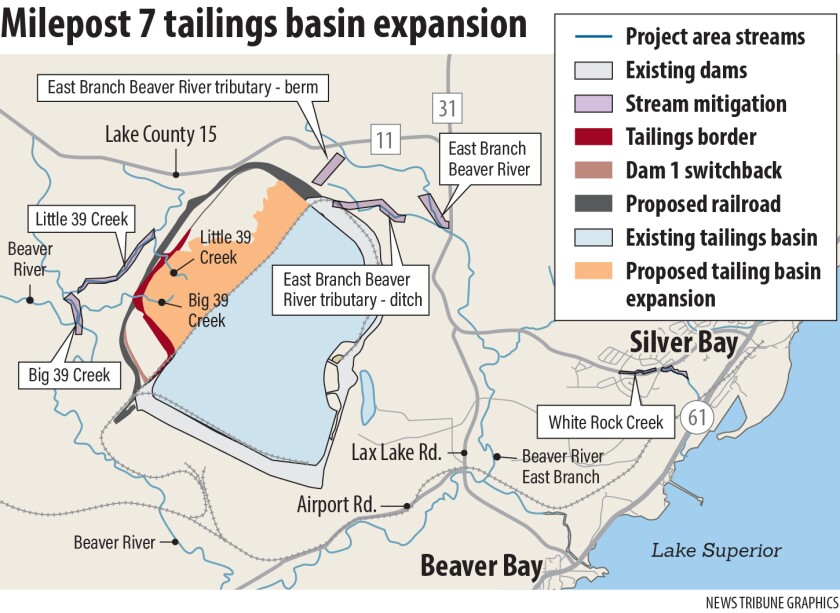SILVER BAY — A Minnesota court said regulators need to determine, again, whether a more stringent environmental review is needed for the planned expansion of a basin holding back mine waste near Lake Superior.
In a 14-page opinion Monday, the Minnesota Court of Appeals said the Minnesota Department of Natural Resources erred and was “arbitrary and capricious” in its decision last year that an environmental impact statement was not needed for the 650-acre area expansion and 60-75 feet dam elevation increase of Northshore Mining’s Milepost 7 tailings basin near Silver Bay and Beaver Bay and three miles away from Lake Superior.
ADVERTISEMENT
In its March 2024 decision, the DNR reasoned that because Cleveland-Cliffs, Northshore’s owner, was planning an expansion within the size and footprint considered in the basin’s original 1975-1976 environmental impact statement, the project was not considered an expansion.

But Judge Renee Worke, who wrote the opinion for the three-judge panel, wrote that the DNR and Northshore “misconstrue the nature of the exemptions” in Minnesota law, which she writes “exempts ‘projects’ … not the ‘effects’ of projects, as DNR and Northshore contend.”
Paula Maccabee, executive director and counsel for environmental group WaterLegacy, which petitioned the Court of Appeals to review the DNR’s decision, said the court’s opinion was a “big victory.”
“It’s a pretty rare occasion where an environmental group gets anybody, and particularly the DNR, to have to reconsider a mining decision. … This is kind of a big day for environmental protection,” Maccabee told the News Tribune. “No, it’s not the ultimate day, but it’s a big day.”
Erik Evans, a spokesperson for the DNR, said in an email that the agency is reviewing the court’s opinion and has not yet determined whether it will petition the Supreme Court for review.
“It is important to note that the ruling does not require the DNR to prepare an Environmental Impact Statement (EIS) or a Supplemental EIS,” Evans said. “It requires us to take another look at our previous determination (i.e., that the project did not require an EIS) in light of the Court of Appeals’ interpretation of Minnesota Environmental Policy Act (MEPA) regulations.”
Cliffs, which did not respond to the News Tribune’s request for comment, is planning to increase the basin's footprint and height to the maximum allowed in its nearly 50-year-old permit: an area of 2,800 acres and dam wall heights of up to 1,315 feet above sea level — 650 acres more than its current area and about 60-75 feet above the current dam elevation.
ADVERTISEMENT
Maccabee said she hopes the DNR will now take a hard look at the safety of a taller dam.

“If it’s going to increase the likelihood or the severity of a catastrophic dam failure, then DNR should make Northshore look at alternatives, and that’s really the crux of it,” Maccabee said. “By pretending there’s no environmental impacts, DNR has not required Northshore to look at choices that would be safer for the communities living downstream of this tailings dam, and actually, for people all along the North Shore that rely on the quality of water in Lake Superior.”
In 2021, the DNR said the project did not need an environmental impact statement or the less-stringent environmental assessment worksheet, though it completed the latter in April 2023 as the project's impact on Big 39 and Little 39 creeks required such a review.
The famed basin was completed in 1980 after then-owner Reserve Mining was forced to stop its decadeslong practice of dumping tailings — the fine pieces of waste rock left behind after taconite is crushed and stripped of its iron — directly into Lake Superior and years of court battles over the tailings' pollution and asbestos-like fibers found in the drinking water of Duluth.
Northshore mines iron ore from its Peter Mitchell Mine near Babbitt, processes the material into pellets at its Silver Bay facility and sends the tailings to Milepost 7.










